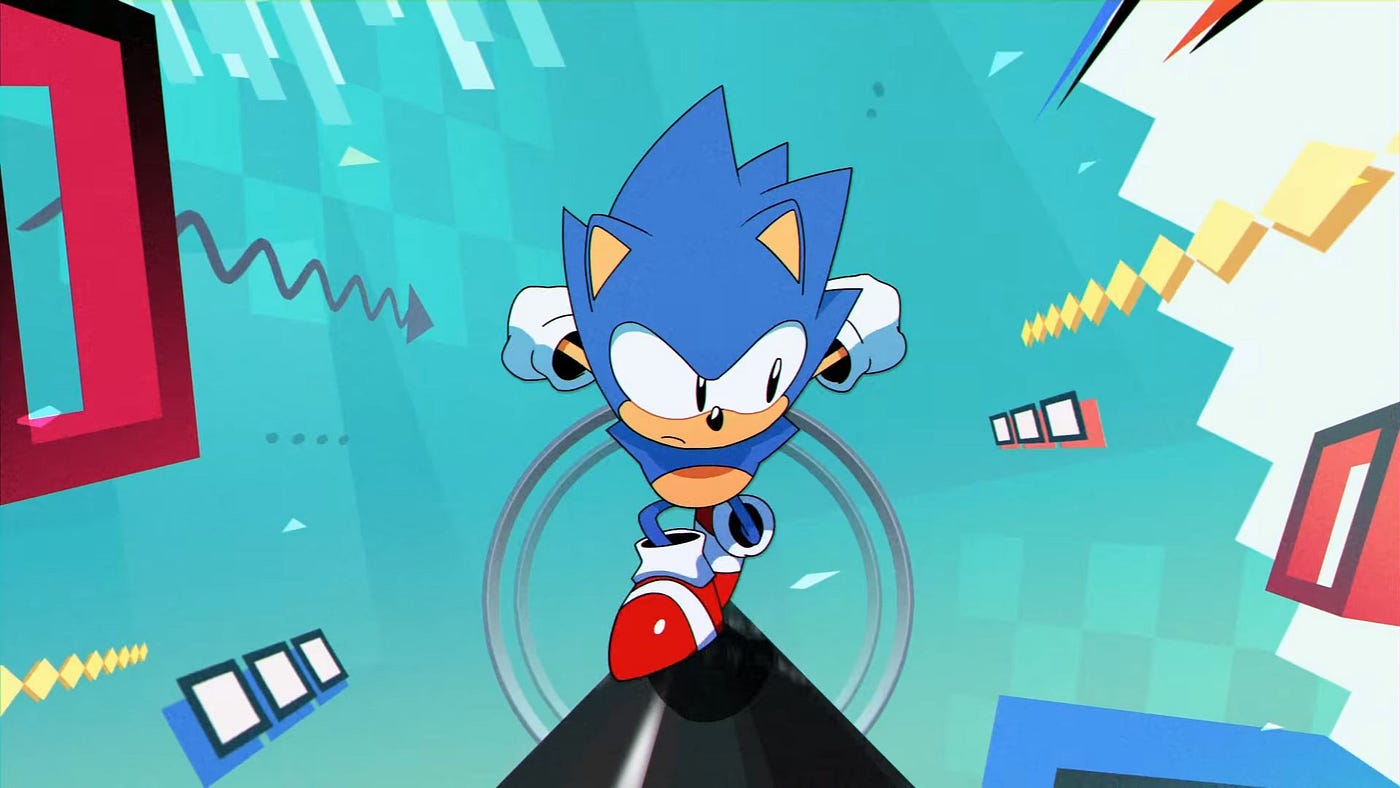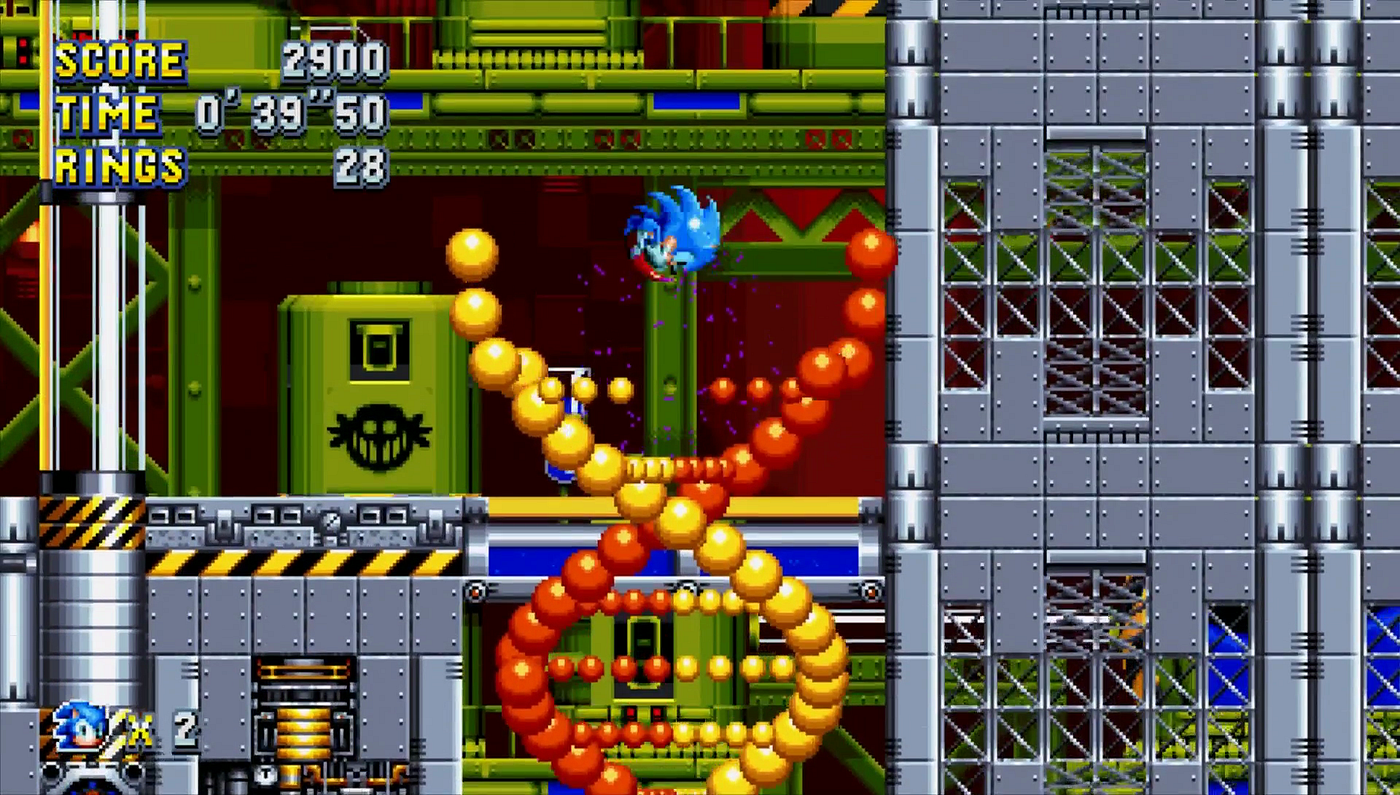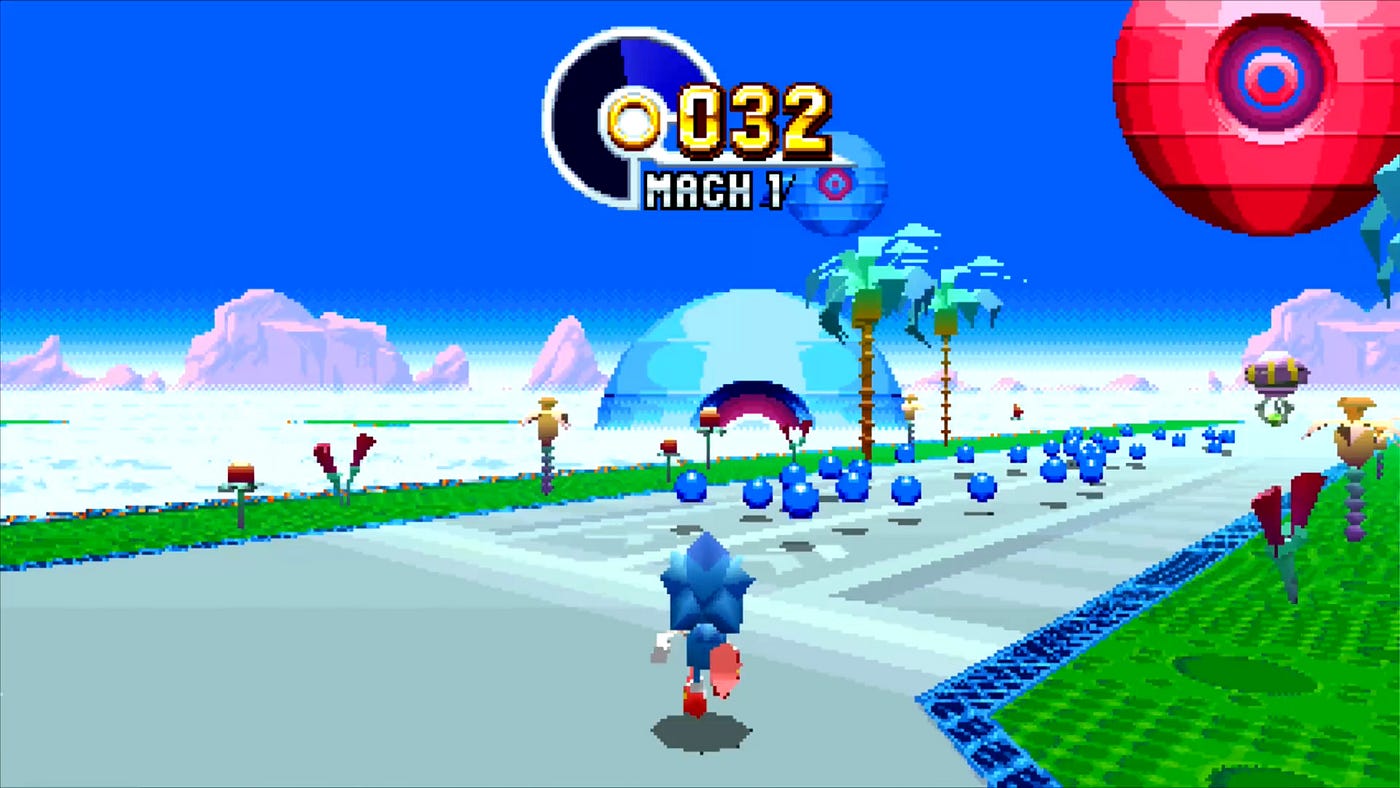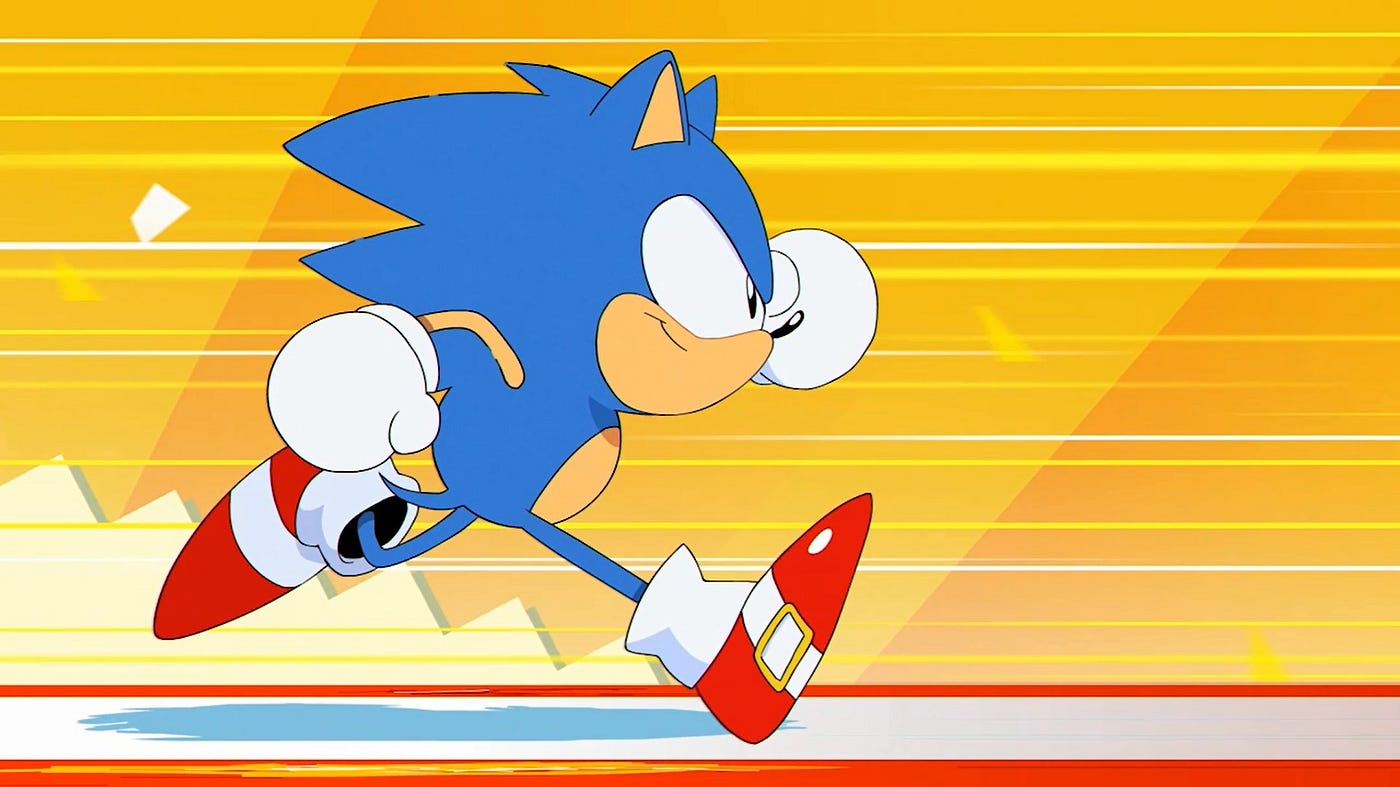Sonic Mania Review
The blur blur is back, baby!

This game was reviewed using a purchased retail copy for Nintendo Switch.
Ever since the Sega Saturn days, Sonic the Hedgehog has had a rough ride. Sonic’s tale of woe is now the stuff of legend among gamers, but for me it isn’t merely an academic topic or a thing of passing interest; as a kid, I was a massive Sonic fan. Even as I grew up with Mario in the early days of my gaming career, I was always fascinated by Sonic; the bright colours, the speed, and the sheer attitude captured my attention. When my parents bought me a Mega Drive II bundled with Sonic the Hedgehog 2, I wouldn’t say I kicked Mario to the curb exactly, but our relationship definitely cooled for a little while as I eagerly explored the other side of the gaming divide (bearing in mind that being a fence-sitter and enjoying both Mario and Sonic was mildly controversial for ’90s kids).
From that point onwards, I was a Sonic devotee. Sonic the Hedgehog 3 was a revelation, especially the way it interfaced with Sonic & Knuckles to form a larger and more complete experience. Clicking two cartridges together and playing Sonic 3 as Knuckles felt like some kind of wonderful black magic. Eventually I was even lucky enough to have a Mega CD with Sonic CD, which felt incredibly special, mostly because I didn’t know anyone else who owned the coveted title at the time.
In amongst the delicious wheaty gems were metric tonnes of dismissable chaff — with games like Sonic the Hedgehog (2006) and Sonic Boom being perhaps the most commonly-cited examples.
Post-Sonic CD, something happened; and, without getting into the weeds, it’s probably fair to say that Sonic himself went through a series of identity crises across multiple platforms. There were some brief moments of genuine Sonic goodness in there: I think Sonic Adventure and Sonic Adventure 2 featured some wonderful experiences (especially the actual Sonic levels), and there were some polished and reasonably well-designed Sonic games after that (Sonic Colours on Wii comes to mind). But in amongst the delicious wheaty gems were metric tonnes of dismissable chaff — with games like Sonic the Hedgehog (2006) and Sonic Boom being perhaps the most commonly-cited examples.
If you aren’t a big Sonic fan — especially if you didn’t grow up with the 16-bit games — you may simply not care about any of this. But for those of us who lived and breathed Sonic as kids, the continual emotional rollercoaster was tiring and occasionally traumatic. It’s tough, after all, to see such a beloved character display glimpses of genius here and there, only to be frequently let down by rushed, incompetent, and just plain bad game design.
So, fast forward to just last year, when Sega held an event to celebrate the 25th anniversary of Sonic. Two games were announced at the event: Sonic Mania and the upcoming Sonic Forces. The latter is ostensibly the next “main” Sonic title, with clear design influences from games like Sonic Colours and Sonic Generations. The former, however, is something entirely different — a step back in time, a “what if” scenario come to life. In this case, the “what if” scenario is simple: what if Sonic Team had produced a direct sequel to Sonic 3 & Knuckles on the Sega Saturn?

Sonic Mania is the emphatic answer to this question, and it’s brought to us by an unlikely assortment of people — unlikely in the sense that they aren’t Sonic Team, but rather, a collection of dedicated and highly-talented fans who had been working on various Sonic fan projects for years before coming to the attention of Sega. For the sake of time — and thanks to the magic of the internet — I’m going to embed a video from Super Bunnyhop which beautifully summarises who these folks are and what role they played in the development of Sonic Mania.
Source: Super Bunnyhop.
I find it remarkable that this was even allowed to happen; not only is Sonic Mania a fan project with the blessing (and budget) of the publisher, but I think somewhere here there is a tacit acknowledgement on the part of Sega that they themselves don’t have all the answers about how to best resurrect the Sonic franchise. I can’t help but respect that acknowledgement; their backing of Christian Whitehead and the broader team is a clear indication that despite any missteps, there are people at Sega who genuinely care about doing justice to the legendary mascot.
Reimagined, not remixed
When I first saw Sonic Mania, it looked like a retro-style remix of the earlier games — perhaps with some new elements thrown in (when the game was unveiled, a brand new level called Studiopolis Zone was revealed). Although there are some familiar zones here, it’s worth pointing out that the development team hasn’t simply tweaked them slightly and added some polish here and there; each of these zones has been fundamentally reimagined from the ground up.

Each zone in Sonic Mania is divided into two acts. Where remakes of classic zones are concerned, the Act 1 portion tends to be a little closer to the original design. However, you’ll still notice significant — and fundamental — design changes throughout, including everything from enemy and object placement to completely re-imagined paths through the level.
Speaking of paths — and as with previous Sonic titles — Sonic Mania’s levels contain a great deal of verticality; there are usually three broad “paths” you can take (a standard path right through the middle, a low path, and a high path). Playing through the first act of each redesigned level feels remarkably fresh, primarily because each of these paths feel more fleshed out than they did in the original 16-bit titles; as well, traversing multiple paths through the same level feels a lot more viable than before.
Sonic Mania’s developers seem to have considered the level design much more carefully than their predecessors, resulting in a better “flow” through each path.
Importantly, I think the development team has addressed one of my major complaints with the original Sonic titles — in the older games, you’d often build up speed and just as you started to feel the wind in your hair, you’d hit a sudden trap that would brutally halt the action and cause rings to go flying in all directions. Sonic Mania’s developers seem to have considered the level design much more carefully than their predecessors, resulting in a better “flow” through each path. You’ll still have to avoid obstacles, and you’ll still come across some devious traps, but the overall flow from beginning to end feels a lot better — no doubt this is also helped by the widescreen aspect ratio, which serves to give you better visibility of what’s coming up ahead.
So, when it comes to classic Sonic levels that have been redesigned in Sonic Mania, the Act 1 portions will definitely give you a flavour of something different and you’ll immediately know that you’re not simply playing an old game with a new coat of paint. But once you reach Act 2, the design really ramps up and diverts much further from the earlier games — this is where major new environmental elements are added, including entirely new interactions that are unique to Sonic Mania. I won’t spoil them for you here, but I have to say that I was delighted when I reached Chemical Plant Zone: Act 2. Somehow, the Sonic Mania development team retained the feel of the Sonic the Hedgehog 2 level while also totally eclipsing the original design in some genuinely surprising ways.

There are a total of 13 zones in Sonic Mania, each with two acts. As well, there are two kinds of special stages — one is a direct throwback to Sonic the Hedgehog 3, where you’re tasked with running around on a giant sphere and touching all of the blue orbs while avoiding the red ones. If you clear these levels, you’ll earn a special medallion that unlocks various special features in Sonic Mania (including a very cool debug mode).
You can also find large rings hidden throughout each zone (again, similar to Sonic the Hedgehog 3), but if you jump through these rings, they’ll take you to a brand new bonus stage created specifically for Sonic Mania.

I really love these new bonus stages. The object is pretty simple; you have to chase a little spaceship around a course — if you get close enough, you’ll nab the precious chaos emerald it is holding. The trick is that you start off fairly slowly, and you need to collect blue orbs to increase your overall speed. Increasing your speed helps you catch the spaceship, but it also makes control more challenging — turning becomes trickier, and it’s easy to slide off the course if you aren’t careful.
Thankfully, these bonus stages aren’t especially challenging. Also, they look like a direct throwback to the kind of 3D graphics we might have seen on the Sega Saturn, which is pretty awesome — it really does feel like this is a missing Sonic classic, which is quite an achievement.
Danger on the dance floor
In addition to the fantastic level design, I’ve really got to call out the utterly brilliant boss battles. Sonic Mania gives you plenty of opportunities to fight bosses; in each zone, you’ll fight a mini-boss at the end of Act 1, followed by a major boss fight at the end of Act 2.
Every single piece of music in the game is lovingly crafted, and sounds superb — this includes remixes of classic tracks, or the entirely new ones.
It’s difficult to convey the strength of the boss battles here without spoilers, but what I find remarkable is the sheer variety and ingenuity of each boss encounter’s design. There are certainly some more “classic”-style bosses, which involve avoiding projectiles and hitting a chuckling Eggman as he hovers overhead. But there are also numerous encounters that are completely different, and which might take the form of specific puzzles or even running skirmishes that take place over a long, winding course. Thanks to the added hardware power available on current-gen consoles as well, the developers have incorporated much more sophisticated environmental challenges in some of the boss encounters — including one battle that revolves around rapidly changing weather conditions.
At this point, I’d be remiss if I didn’t call out the incredible music in Sonic Mania. Every single piece of music in the game is lovingly crafted, and sounds superb — this includes remixes of classic tracks, or the entirely new ones. Even the new tracks feel completely at home in a Sonic game, which is really a testament to the creativity of Tee Lopes, the game’s composer.
Welcome back, Sonic
There’s a ton of stuff I haven’t mentioned in this review, partly because I think you should experience it for yourself — a big part of the pleasure of Sonic Mania is the surprise and delight of coming across the many easter eggs and nods to the franchise’s classic roots.
It feels wonderful — and slightly surprising — to be sitting here reviewing a new Sonic game that completely knocks it out of the park. This is the game Sega should have made years ago, and I’m just glad that we finally have it now, even after the long wait.
Are there any caveats to my so-far glowing review? Well, yes. It’s worth saying that if you didn’t grow up with the 16-bit Sonic titles, the allure of Sonic Mania might be somewhat lost on you. As great as it is as a stand-alone platformer, there’s no question that a big part of the charm here is the nostalgia factor. But unlike some games that try to cash in on nostalgia but don’t have the goods to back it up, Sonic Mania actually delivers on the promise it makes.

Another caveat is that because this game is really seeking to reflect a long-lost Saturn-era Sonic title, it’s missing some quality of life improvements that might be a turn off to some gamers, especially those who are more accustomed to modern platformers. For example, you have limited lives in Sonic Mania and if you lose them all, you’ll have to re-start the latest zone you played right from the beginning. If you’re up to the boss on Act 2, this can be a pain. So, it’s worth knowing this before you sign up.
In my humble opinion, Sonic Mania is the best Sonic game ever made, period. If you’re a Sonic fan, it’s an absolute no-brainer.
A final point worth addressing is the question of which platform to buy for. I picked up Sonic Mania on the Nintendo Switch, largely because I wanted to be able to play it on the go (it looks stunning on the Switch’s screen in handheld mode). Aside from that, the game is largely the same across Switch, Xbox One, and PS4 — however, if you pick the game up on PS4 Pro, you’ll be able to play in native 4K at 60fps. If you’ve got a lovely big 4K display, that might make the PS4 Pro version worthwhile for you.
In the end, there’s not much else I want to add — again, a bit part of the pleasure is discovering this game’s secrets for yourself, especially if you’re a fan of the classic Sonic games. In my humble opinion, Sonic Mania is the best Sonic game ever made, period. If you’re a Sonic fan, it’s an absolute no-brainer. And if you’re not a Sonic fan, the game is pretty cheap across all platforms; I recommend picking it up, if only to see what all the fuss is about.
